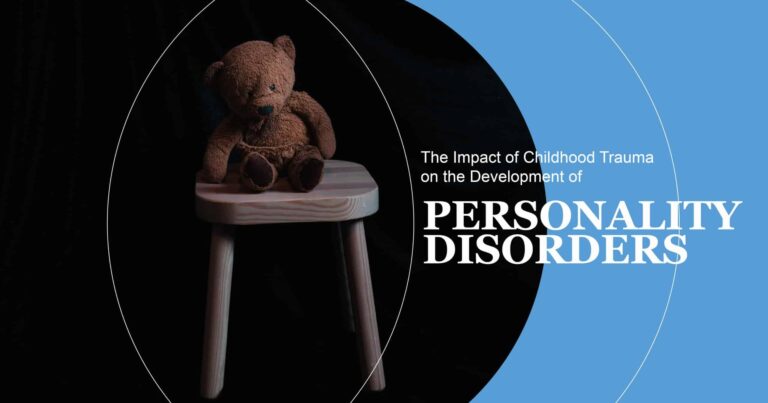Childhood experiences shape the foundation of who we become, influencing our emotions, behaviors, and relationships throughout life. Among the complex psychological conditions linked to early life experiences, Narcissistic Personality Disorder (NPD) stands out as particularly perplexing. Often misunderstood and stigmatized, NPD is characterized by patterns of grandiosity, a need for admiration, and a lack of empathy. But what role does childhood trauma play in the development of this disorder? In this article, we’ll explore the emerging research and psychological insights that unravel the intricate connection between childhood trauma and NPD, shedding light on how early wounds can shape the adult psyche in profound ways. Whether you’re a mental health professional, someone seeking to understand a loved one, or simply curious about the roots of personality disorders, this exploration aims to provide clarity and compassion on a challenging topic.
Table of Contents
- Understanding Childhood Trauma as a Root Cause of Narcissistic Personality Disorder
- Exploring Psychological Mechanisms Connecting Early Trauma to NPD Development
- Identifying Key Behavioral Patterns Stemming from Traumatic Childhood Experiences
- Effective Therapeutic Approaches and Strategies for Healing NPD Linked to Trauma
- Insights and Conclusions
Understanding Childhood Trauma as a Root Cause of Narcissistic Personality Disorder
Childhood trauma can leave deep, lingering imprints on an individual’s psychological framework. When children endure neglect, abuse, or emotional invalidation, their developing sense of self becomes fragmented. To cope with overwhelming feelings of vulnerability and worthlessness, some may adopt defense mechanisms that later crystallize into narcissistic traits. These behaviors, often characterized by a fragile self-esteem masked by grandiosity, serve as protective shields against the lingering pain of unmet emotional needs. Understanding this root cause reveals why traditional labels and surface behaviors often obscure the true origin of narcissistic personality disorder.
Key factors linked to childhood trauma that contribute to the emergence of narcissistic features include:
- Emotional neglect: A lack of validation and affection distorts a child’s ability to internalize self-worth.
- Inconsistent caregiving: Unpredictability fosters insecurity, compelling the child to seek external validation relentlessly.
- Physical or psychological abuse: Trauma ingrains a deep-seated belief of inadequacy, which may manifest as exaggerated self-importance.
Recognizing these underlying wound patterns is crucial for effective therapeutic intervention, shifting the focus from blaming behaviors to healing the core trauma that fuels them.
Exploring Psychological Mechanisms Connecting Early Trauma to NPD Development
Delving into the intricate psyche behind Narcissistic Personality Disorder (NPD), we find a mosaic of psychological mechanisms shaped by early traumatic experiences. Childhood trauma often disrupts the formation of a stable self-concept, leading to a fragile sense of identity. This fragility compels individuals to erect grandiose self-images as a defense, fostering an exaggerated need for admiration and validation. Such compensatory behaviors, though outwardly confident, mask profound vulnerabilities stemming from neglect, emotional abuse, or inconsistent caregiving. These early wounds destabilize emotional regulation, prompting maladaptive coping strategies that cement the foundations for NPD traits.
Several key psychological processes play pivotal roles:
- Attachment Dysregulation: Disrupted early bonds inhibit the development of secure attachments, causing reliance on external validation to soothe internal insecurities.
- Emotional Dysregulation: Trauma impairs the ability to manage intense emotions, leading to outbursts or withdrawal that feeds narcissistic defenses.
- Idealization and Devaluation: A common coping mechanism where the self or others are alternately praised or despised to manage overwhelming emotions.
- Distorted Self-Perception: Early trauma warps self-awareness, fostering grandiosity as a shield against feelings of worthlessness.
Identifying Key Behavioral Patterns Stemming from Traumatic Childhood Experiences
Childhood trauma often leaves deep emotional imprints that manifest in specific behavioral patterns during adulthood. Individuals affected may exhibit a heightened need for control and validation, alongside difficulty in forming authentic emotional connections. These behaviors can be traced back to the survival mechanisms developed to navigate an unpredictable or unsafe environment during formative years. Recognizing these patterns is crucial to understanding how early adverse experiences influence the development of narcissistic traits, often as a shield against vulnerability.
Common behavioral signals to watch out for include:
- Excessive self-centeredness: A defense mechanism to mask underlying feelings of insecurity or worthlessness.
- Difficulty with empathy: Challenges in genuinely relating to others often stem from disrupted emotional development in childhood.
- Fragile self-esteem: Despite outward confidence, there may be a persistent inner fear of rejection or abandonment.
- Emotional detachment: Avoidance of deep connections as a protection against potential emotional harm.
Identifying these patterns provides vital insights not only for diagnosis but also for designing effective therapeutic interventions that address the root causes rather than symptoms alone.
Effective Therapeutic Approaches and Strategies for Healing NPD Linked to Trauma
Addressing Narcissistic Personality Disorder (NPD) rooted in childhood trauma requires a nuanced and compassionate approach. Therapists often employ trauma-informed care as the foundation, which prioritizes creating a safe and supportive environment where individuals feel validated rather than judged. This approach allows for establishing trust—an essential step, given that early trauma often impairs the ability to form secure attachments. Techniques such as Eye Movement Desensitization and Reprocessing (EMDR) and Somatic Experiencing can be particularly effective in helping clients process traumatic memories stored in both the mind and body, promoting emotional regulation and reducing defense mechanisms typical in NPD.
Beyond trauma processing, therapeutic strategies emphasize the development of empathy and self-awareness, crucial deficits in narcissistic personality dynamics. Incorporating modalities like Dialectical Behavior Therapy (DBT) or Mentalization-Based Treatment (MBT) can enhance emotional insight, teaching individuals to recognize how trauma influences their thought patterns and interpersonal behaviors. Key components often include:
- Building healthier relational skills through role-playing and real-life social interactions
- Challenging grandiose self-perceptions while fostering genuine self-esteem
- Encouraging vulnerability and authentic self-expression in a controlled therapeutic setting
These strategies, paired with patience and consistency, empower those with NPD linked to trauma to gradually reconstruct a more integrated, resilient sense of self.
Insights and Conclusions
In unraveling the complex connection between childhood trauma and Narcissistic Personality Disorder, it becomes clear that early adverse experiences can profoundly shape one’s emotional landscape and coping mechanisms. While not everyone who endures trauma develops NPD, understanding these links offers valuable insights for both mental health professionals and those affected. Recognizing the underlying wounds behind narcissistic behaviors opens the door to more compassionate approaches to treatment and recovery. As research continues to evolve, fostering awareness and empathy remains key to supporting healing journeys and breaking cycles of pain.

